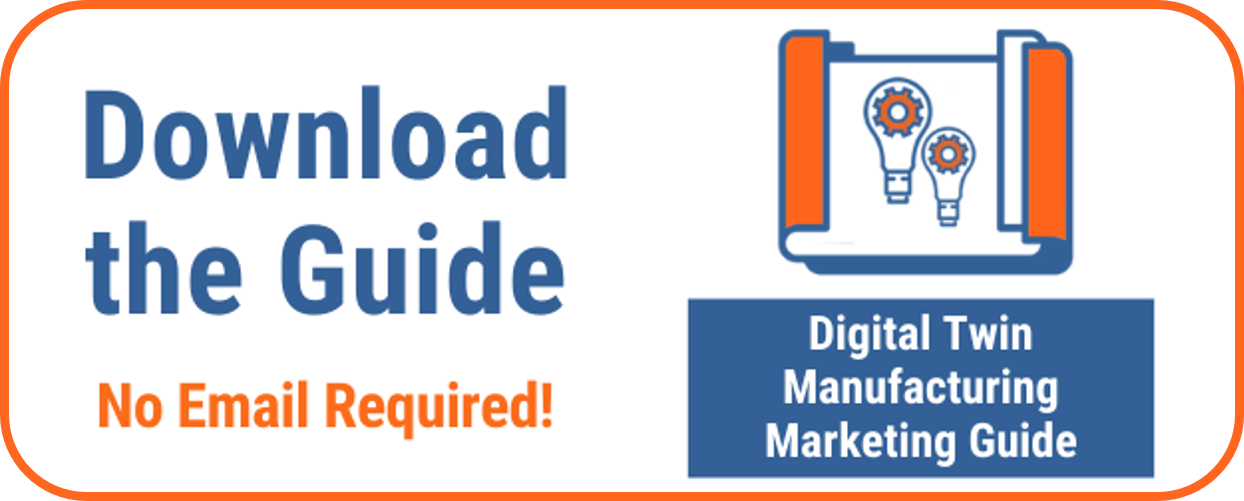A competitive analysis is essential for any business initiative. But too often, companies think only of their direct competitors. As you’re assessing the competition, you may be surprised to find your biggest competitors aren’t always who you think. Here’s a video explaining more:
We recently completed a Winbound case study featuring one of our clients, Spuncast. When we asked Greg Whitman, their Vice President of Sales and Engineering, why he chose Winbound for his marketing partner, he gave us an unexpected answer.
Greg told us that cold-calling and attending trade shows were no longer effective ways for the sales team to generate leads. So they considered three different methods to help boost their sales and marketing efforts:
- Hire a lead-generation company
- Hire an in-house marketing department
- Hire a marketing agency
Here’s a video of his answer, and how they assessed each competitor.
Wait, what about our direct competitors?
When I heard how Greg framed his options, it gave me pause. I thought that his search for a solution would involve reaching out to my direct competitors. But Spuncast’s first option was to think about alternatives in a much broader sense.

It made me realize that companies don’t always conduct the exhaustive search that you think they do. For small organizations, that type of in-depth search may actually be counterproductive, taking too much time and leading to paralysis by analysis.
So instead, they choose broad-based options that can help them fulfill basic criteria, and then they choose a solution from that group.
I have no data supporting that this is how the bulk of companies make their decisions. But even if they do eventually line you up against direct competitors, it helps you to think about the competition in broader strokes first.
Think big picture when it comes to the competition
In the exceptional book They Ask, You Answer, sales and marketing guru Marcus Sheridan identifies five types of content that generates the most interest when prospects visit a website:
- Pricing and costs
- Problems
- Versus and comparisons
- Reviews
- Best in class
Note we’ve highlighted “versus and comparisons.” That includes content that compares different companies or solutions. You’ve likely done this when you’ve typed in “Company A versus Company B” when evaluating your options.
Sheridan advocated producing content to compare your company to the competition. Most companies will balk at this tactic, but he notes that an objective, realistic comparison is a highly-effective way to build trust.

That kind of honesty builds trust.
Plus you’re also acknowledging the inevitable. According to the book The Challenger Sale, 58% of the customer journey has been completed before a salesperson is even contacted. With or without you, your prospects are going to search for options.
Three competitors you (we) hadn’t considered before
Sure, you should create comparison content that compares yourself to direct competition. (We’ll get to that in a bit.) But before you do that, follow Greg Whitman’s thinking, and start with more broad-based options.
You may need to get some feedback from your customers on some of these — specifically Competitor #3.
Competitor 1: The status quo
Any type of complex sale will require change on the part of your customer. And people hate change. That’s why your first comparison should be “the status quo versus your solution.”
Your job will be to make it clear that the pain of the status quo is far greater than the pain of changing to the solution you’re proposing.
Tactics:
- Provide customers with benchmark reports so they can see how people who have made the change are performing.
- Cite industry best practices, especially if they include elements of your solution.
- Create a “pain calculator” that can help them project revenue in the current state versus a future state, which would include your proposed solutions.
Example:
We point out a report by the Aberdeen Group which states companies that align their sales and marketing efforts can achieve a 20% increase in sales, but those that do not can experience a 4% decrease in sales. They base those estimates on best practices, and the report lists those practices.
It’s easy for someone to self-identify how they compare to the best practices, and then see the result of failing to change.
Competitor 2: The DIY approach
If you provide insights proving that change is required, a company will first assess the idea of performing the task in house. It makes sense, especially if they have the cash flow to hire personnel or build internal resources.
But you have an advantage here in that you have already built what they are considering taking in house, so you can point out all the intangibles they may be missing.
Tactics:
- Show them the obvious costs. This includes the day-to-day operational costs.
- Show them the hidden costs. You know what it takes to operate and maintain a solution — show them the costs they may not be expecting.
- Show them the skillset required. It’s more than just personnel involved here. You have to explain the craft, and what it takes to be proficient at it.
Example:
We publish a listing of what it would take to hire a complete internal team with the expertise that Winbound provides. That, on a conservative day, comes out to three salaries that equal $31,000 per month. Our costs, at $6,000 per month, look pretty darn good.
Competitor 3: The adjacent category
What if your services can be provided in an entirely different way, from a different company? If you provide lawn-cutting services, for example, you should also assess what the costs would be for a customer to go with a company that helps them create a natural prairie.
In this case, you will want to focus on things that matter to the customer. Having a lawn might be better for a family that has kids and wants a big open space for them to play.
Tactics:
- Analyze the different costs of an adjacent competitor — think in terms of total expenditures.
- Look at the intangibles. They’ll likely only provide part of the solution — is there something additional you can provide?
Example:
In the case of Spuncast, the adjacent category was a lead-generation company. What we pointed out to the client was that the lead gen approach didn’t help them gain a digital presence, and it didn’t help them create content that could be used by the sales team as part of the process.
Showcase your direct competition, too
But what about your direct competition? Marcus Sheridan advocates providing a complete rundown of the different services competitors in your industry offer.
Now why on earth would you do it? Sheridan offers a few good reasons:
1. The customer is likely going to find out anyway (remember our stat — 58% of the sales process is conducted before even talking to a salesperson).
2. You might gain important search engine ranking by ranking for comparison terms.
3. You establish trust with a customer. (“Wow, these guys must really be good if they are brazen enough to showcase the competition.”)
4. You get an opportunity to position yourself. Sheridan explains some intriguing ways to do this, such as NOT including yourself in the comparison. It adds credibility to you, and establishes trust out of the gates.
All of the comparisons you publish and build out on your website help you establish trust, the last part of the Know You, Like You, Trust You content that comprises the Digital Twin.
Ultimately, any type of comparison content will not only build trust, but it will provide a business insight to your customer. It will showcase a way they can improve their business.
In complex sales, business insights are ultimately what the customer values most from a potential partner. Why not beat the competition (at all levels) to the punch?

